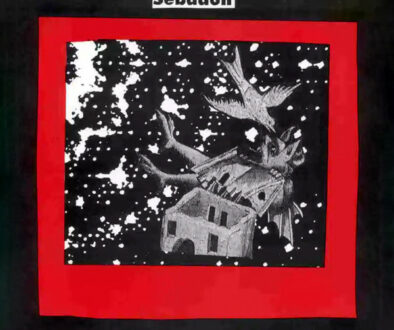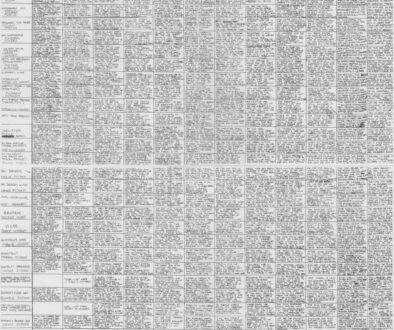Trenchcoat and Cigarette and Arrogance (Book Three, Part 48: Late Ennis Hellblazer)
Previously in Last War in Albion: Garth Ennis’s take on John Constantine drew heavily on the noir genre for influences, and largely fit into the structures suggested by Raymond Chandler’s classic essay “The Simple Art of Murder.”
“I’m the one who steps from the shadows, all trenchcoat and cigarette and arrogance, ready to deal with the madness.” – Garth Ennis, Hellblazer
Ennis’s approach, it’s clear, is much closer to the one Chandler lays out than is convenient for Ellis’s point, even as his eventual conclusion that Constantine is the enemy of abusive authority in the general case clearly works.

Central to this is the unspoken ethical foundation of Chandler’s manifesto and the fundamental difference between detective fiction and what Ennis is doing in Hellblazer. At the heart of Chandler’s notion of realistic detective fiction is, ultimately, the perspective and worldview of the police. This is in some ways natural; murder is the domain of the police, just as war is the domain of soldiers. One cannot tell a realistic story about something without relying on the worldview of the people who deal with it. But a consequence of this is a worldview that is shaped by the police and their worldview, with all the innate conservatism implicit in that.
The occult, however, is not the domain of any real-world job, and so Ennis was left with considerably more freedom in how to tell his story. But Ennis’s clear focus on making sure the magical solutions within his stories made sense and were adequately set up is a clear embrace of Chandler’s ethics of realism, and a clear rejection of the sort of thing Chandler criticized British mysteries for,. On a larger scale, meanwhile, Ennis put much effort into grounding Constantine in his own experience of the real world. As he explained, Constantine “was a bloke who lived in contemporary London and did contemporary London things.” And with this wide mandate to shape his hero and his moral worldview, Ennis substituted the realism of cops with the realism of a man who grew up in Thatcher’s Britain amidst the Troubles, who drank a lot with his mates. And so his Constantine took the basic framework of the noir protagonist and shaped it into something more anarchic and engaged. This was a savvy understanding of Constantine—an unearthing of threads that were implicit in the character since his creation that wove them into a form that was well-suited to the landscape of the early 1990s.

Constantine’s post-breakup collapse marked the beginning of Ennis’s endgame, although he had more than a year left to run on the title. First came a phase featuring an unshaven, drunk, and homeless Constantine. This only featured three actual issues—a two-parter that resolved the lingering King of the Vampires plot from Hellblazer #50 and a one-shot in which Constantine is spooked by the ghost of a crashed World War II pilot that inspires him to get back to his life. This marked the first instance of Ennis directly engaging with the war comics that he grew up reading, But this issue, with its mawkish and Churchill-quoting title “Finest Hour” and its moral lesson about how the dead pilot “never gave up” and “clawed and fought to the last drop of blood for life” that leads Constantine to decide he owes it to him to try to live, is far from the best instance of it, landing closer to the jingoistic pap published in Commando and War Picture Library than to the stuff like Charley’s War that Ennis was clearly trying to approach.

These three issues, however, were augmented in two ways. The first was the Vertigo Jam anthology, which featured short stories from all of Vertigo’s titles including one set in Constantine’s homeless phase where he relates an old story. The second was Hellblazer #70, which came between the King of the Vampires two-parter and “Finest Hour” and did not feature Constantine at all. Titled “Heartland,” it was not even a supernatural horror story, instead offering twenty-four pages of slice of life storytelling about Kit returning to Belfast after her breakup. This served to demonstrate a fundamentally different skillset for both Ennis and Dillon, who excelled with a busy script full of high-panel count pages of little more than conversation in a pub, capturing the essential emotions out of Ennis’s dialogue to ensure an issue that moved with breezy clarity despite consisting almost entirely of characters the reader has never met before and not much happening. It’s a triumph, and a simple demonstration of the sheer range that Ennis and Dillon possessed.

Upon his return to being a troublemaking occultist instead of an alcoholic homeless man, Constantine takes a four issue trip to the US for Ennis’s penultimate arc, Damnation’s Flame, which sees him bring back the character of Papa Midnight from the beginning of Delano’s run to have him drag Constantine into a surreal nightmare of America. Many things are odd about this. Ennis was never reluctant, per se, to pick up on the threads Delano had established, but aside from characters such as Chas or Gemma that would be difficult to justify dropping he had not previously directly followed up on a Delano story like this. Indeed, he would continue this the issue after Damnation’s Flame in a flashback that saw the better part of Ennis’s supporting cast meeting with Jerry O’Flynn, a minor Delano character who featured in the leadup to the Family Man arc. (This also saw Constantine talk about the Ace of Winchesters, a magical demon-killing rifle that would eventually set up a micro-crossover with Ennis’s Hitman title—a distinctly minor bit of DC lore unless one happens to be asking questions like “where does Eric Kripke get his ideas from?”)

More unusual, however, is simply the overall tone of the arc—a high concept and surrealist piece that in many ways reads like Ennis trying to do his version of Milligan’s Shade the Changing Man, complete with a spectral version of John F. Kennedy. (In a succinct demonstration of the two writers’ differences, Ennis has Kennedy holding the back of his head to keep his brains in and talking in a constant political doublespeak.) By and large, however, this fails utterly to play to Ennis’s strengths, resulting in a sprawling and vaguely unsatisfying story. In many ways, it is comparable to Alan Moore’s sci-fi sequence towards the end of his Swamp Thing run, with a similar sense of an arc that sees the writer running low on ideas, doing things that they’re simply not as well suited to. Perhaps unsurprisingly, then, Ennis proceeds to wrap things up. He does two more one-off issues—the aforementioned one that brings back Jerry O’Flynn, which is largely focused on Constantine drinking with the ghost of Brendan, and another with guest artist Peter Snejberg that sees Constantine reconcile with Chas, who he hurled verbal abuse at during his depressive spiral after Kit left. (Also in this period is a backing story to Hellblazer #75, the final issue of Damnation’s Flame, which sees Ennis reunite with William Simpson to tell the story of Constantine and Kit’s first meeting—a note that, along with Hellblazer #70, offers a clear declaration of who Ennis actually sees as the centerpiece of his run and a tacit explanation of why her departure pushes the run into its endgame.)

Ennis’s final arc sets its tone in its first pages. It starts with an establishing shot of a bus station, then moves to John Constantine and Header, a lesser member of Ennis’s supporting cast, lighting cigarettes. Header begins telling a story of his time in the Falklands War, following an order to execute Argentinian combatants. As he does, he begins bleeding out of the corner of his mouth. He ends the story noting that “Ah think ah ken exactly how the poor bastard felt, right now. Ah should’ve stayed fit when ah came oot o’the paras, so I should. If ah wasn’t such a fat bastard ah could’ve been oot thon door before the dickhead wi’ the shotgun could blink. Heh heh heh. Shite.” He trails off, unmoving, and Constantine walks away from the station; a final panel returns to Header, showing him below the neck for the first time, a massive and bleeding wound in his ribcage.
This opening largely set the tone for Ennis’s grand finale. Its plot, unsurprisingly, sees the First of the Fallen finally make his move on Constantine, spurred on by Astra, the young girl Constantine failed to save in Newcastle now turned a full-fledged demoness, who offers the him a plan to destroy Constantine. This results in a bloody massacre of the entire supporting cast of the Ennis era; of the significant characters he created only Kit, Ellie, and the Lord of the Dance survive, and the latter is brutally injured trying to make a stand against the First of the Fallen. Even Gabriel goes down, his heart crushed by the demon. It’s a striking and audacious move, clearing the deck for Ennis’s successor to put his own stamp on the character and putting an emphatic full stop on Ennis’s tenure. But it also serves as a comment on Constantine and the consequences of what he does. It’s notable that Constantine is not, in fact, saving the world here. All of his friends who die in this story die because he pissed off the First of the Fallen in the course of curing his cancer back in Dangerous Habits. In a very real sense they die because Constantine didn’t quit smoking.
Ennis counterbalances all of this with a plot running across the arc in which Constantine attempts to help an old friend named Helen who’s fallen into addiction and become a sex worker with a violent and abusive pimp. This process has some ups and downs to say the least, with the pimp at one point tracking her down and attacking the nurses Constantine has gotten to help her, but the arc ends, after everything else has been resolved, with Constantine meeting with Helen and her thanking him for helping him, a clear marker that Constantine does, in his own small ways, help and make the world a better place.

This subplot is one of several, however, and they conspire to overstuff the final arc as Ennis tries to balance Helen and the First of the Fallen with an additional subplot concerning a race riot that brings George, the guy who shot Patterson back in Fear and Loathing. This plot never quite manages to connect with the others, with George and Constantine having a two-page conversation at the end of the arc that flimsily tries to establish parallels between the community’s defense of George after he shoots the cop who murders his mother and Constantine’s actions. This has the astonishingly unfortunate result of equating Constantine’s fundamentally selfish “I got all my friends killed curing my lung cancer” plot with Black resistance against racist and murderous cops, which is a shockingly big error for a plot Ennis never really manages to tie into the rest of his story. Add in the fact that Ennis uses the bulk of his penultimate issue to give Constantine a dream sequence reconciliation with Kit and you have an arc that unequivocally bites off more than it can chew, and to its detriment.

So on the one hand, the end of Ennis’s run certainly shows his limitations, with two over-ambitious arcs that have him faltering at the sort of high concept, meataphor-laden material that Moore and Morrison were perfecting. That’s simply not the sort of writer he was. But in contrast to a writer like Milligan, who aimed to work in the same arena and fell short, this was never where Ennis’s strengths lay. And for all that the arc gets away from him at the edges, the core of the arc is Ennis honing the basic pleasure of his run into a credible final form. The arc ends as it has to, a one on one confrontation between Constantine and the First of the Fallen. They argue and threaten and cajole each other, with Constantine at one point laughing in the Devil’s face. Eventually he pushes it too far, provoking the Devil into summoning Astra to torment him. And then, as the Devil prepares the killing blow, Constantine does the inevitable and flips the script. [continued]




